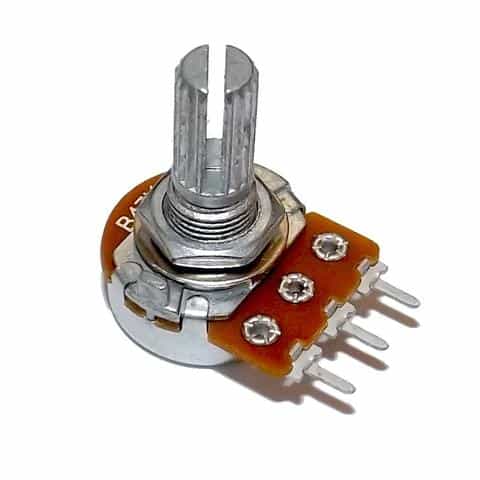5k Potentiometer
This product is no longer available.
Internal Reference:
5k Potentiometer
A potentiometer henceforth referred to as a pot, is a variable resistor. It is an electrical component with three terminals (i.e. pins or legs): one for input voltage (e.g. 5V), one for output voltage (e.g. GND) and one for picking up the value of the pot (we’ll call this the wiper).
Mechanically speaking, pots are physically adjusted usually using your fingers. Both rotational and linear pots are common.



Pots are used a lot in all kinds of electrical appliances. Volume knobs, light dimmers and faders in audio mixers are often controlled with pots. They also come in digital and even motorized versions, but those are outside of the scope of this post.
If you want to control the speed of your electric motor, the position of your servo, LED brightness, filter cutoff on your synthesizer, gain on your guitar amp or thousands of other cool things in your own embedded system, a pot might just be the solution for you.

Code
void setup() {
pinMode(3, OUTPUT);
}
void loop() {
int Time = analogRead(A0);
Time = map(Time, 0, 1023, 20, 1000);
digitalWrite(3,HIGH);
delay(Time);
digitalWrite(3,LOW);
delay(Time);
}